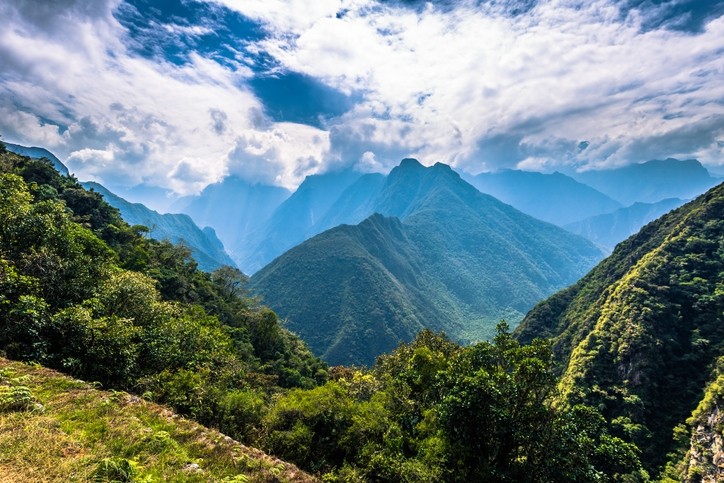From the editor's desk
Centinela: Remember the name

Life adapts, but how long does it take?
Life adapts, sure, but not on a time scale that’s relevant to human existence. Life came through the crisis of the eons-long debacle of the Siberian Traps eruptions. Picture a handful of Mount Saint Helens-sized eruptions every month for a million years or so.
After the resulting Permian extinction killed off 90% or so of all species, evolution started churning again. But would you have wanted to live in a terrestrial world populated with a few species of fungi and not much else?
Or how about trying to make your way after the more recent extinction at the end of the Cretaceous era, the one that killed the dinosaurs? Whether this was caused by a single asteroid or comet strike or by a combination of factors, it was a profound event, leaving the world changed forever. Imagine trying to source botanical ingredients in the era after that impact, when many species of terrestrial plants had disappeared and for many years the earth was robed almost exclusively in ferns.
Responding to cataclysms
I’ve often wondered, being the student of history that I am, how people who lived through the cataclysms of the past viewed their world and their lives within it. I suspect like life writ large, they mostly adapted after the initial shocks and moved on. In the years after the Black Death, for example, serfs did not continue to bemoan the great suffering that had been inflicted upon them and the huge numbers of their brethren felled by the disease. They didn’t continue to bitterly ruminate on why they somehow seemed to have lost the favor of their deity. No, they looked around, saw that labor was now in short supply, and used that leverage to negotiate higher wages and greater freedoms from their noble masters.
So people accommodate themselves to new circumstances, however little they might resemble their earlier lives. This is what people seem to be doing today. If the weather predictions bear out, this week will have seen the first ever stretch of multiple 100-degree plus days in Phoenix in the month of May. It was 109 degrees there as I wrote this, and it was supposed to hit 111 Friday, the hottest May day on record. Climate change has just become a fact of life. We adapt, and figure out a way to survive.
But plants can’t adapt that rapidly. Change things too fast for them and they simply disappear. Their environments are being changed dramatically first and foremost by habitat destruction, as the still growing human population moves into new areas for living space, agriculture and resource extraction. And all those extra humans are pumping out increasing amounts of greenhouse gases into the atmosphere, warming the planet and stressing those plant communities that manage to survive the bulldozer, the chainsaw and the torch.
Cautionary tale of Centinela
As an example of what we are losing every day let me throw out the tale of a place called Centinela, as recounted by the great zoologist Edward O. Wilson in his book The Diversity of Life. The book was published in 1992, just as a new door seemed to be opening in international relations, when the world seemed to be greening to liberal democracy and large scale multinational cooperative projects seemed possible. It was a time before 9/11, the 2008/2009 global financial crisis, the wars in Afghanistan and Iraq, the Arab Spring turned to winter and our present pandemic all changed the world as we know it and diverted our attention. But natural processes, once set in motion, plow on with no regard to wars, politics or pandemics.
Centinela was the name for a particular ridge top on the Pacific side of the Andes Mountains in Ecuador. There are thousands of such ridges fanning out from the mountainous spine of the South American continent. In the tropical latitudes at higher elevations they are covered in cloud forests that differ from the rainforest vegetation lower down and are separated from each other by the cold grasslands above. They end up being as botanically distinct from one another as islands in the ocean.
According to Wilson, in 1978 two botanists from the Missouri Botanical Garden in St. Louis visited the ridge and catalogued as many as 90 unique plant species they found there, including several herbaceous understory varieties that featured black leaves.
Black leaves! What possible benefit could this spectacular mutation have provided to the plants? Botanists are still stumped by this, but, sadly, there are apparently none of these plants left on which to test any hypotheses. By 1986, following the construction of a new road into the valley below, the ridge had been razed for a cacao plantation.
Just think what a possible treasure trove of new bioactives those leaves might have held. They were probably chock full of never before described tannins, enough to make even the most desiccated analytical chemist salivate with anticipation.
This is just one example. There are likely hundreds or thousands more, where the destruction happened without a botanist along to have catalogued what has been lost. Plants burned or bulldozed for cheap beef, more coffee or cheaper vegetable oil, or forced out of their typical habitats by climate disruptions.
Protecting biodiversity as new goal
There has been much talk about how things ought to change after the world comes through the pandemic crisis. How going back to ‘normal’ won’t be good enough, because ‘normal’ wasn’t very good for the planet or for many of the people living on it.
To my mind, one of those things that should change is the lack of focus on biodiversity. We’ve become accustomed to things like seeing maps of the deforestation of the Amazon and comforting ourselves if the rate of loss might drop from, say, 4% a year to 3.5%. Things are getting better, right?
Wrong. Slowing the rate of loss of forest cover, or restricting the rate of growth of oceanic dead zones or of bleached coral reefs or any such measure might signal progress, but it still represents a loss. It’s like a company that’s struggling; you can’t save the company just by slowing the rate at which you lose money.
So I would hope one of the things we could focus on as an industry in this new world we are supposedly entering is to more vigorously support efforts to preserve marine and terrestrial protected areas, to rebuild and increase biodiversity and so forth. And that implies a renewed focus on combating climate change. All of our talk about sustainability and traceability won’t mean much if the fabric of life on which we depend is unraveling at its core. It’s too late for Centinela, but there are thousands more places just like it, begging for our protection.
















